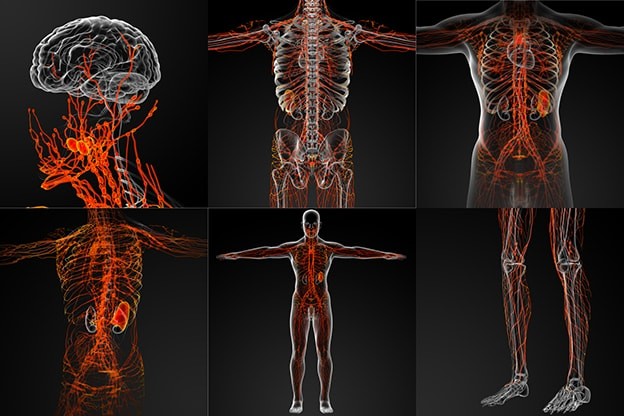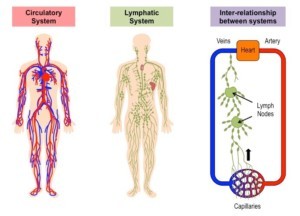A network of tissues and organs that help rid the body of toxins, waste and other unwanted materials

The primary function of the lymphatic system is to transport lymph, a fluid containing infection-fighting white blood cells, throughout the body.
It is made up of a complex network of lymphoid organs, lymph nodes, lymph ducts, lymph tissues, lymph capillaries, and a network of lymphatic vessels that carry lymph and other substances throughout the body.
The lymphatic system can be thought of as a drainage system needed because as blood circulates through the body, blood plasma leaks into tissues through the thin walls of the capillaries.
The portion of blood plasma that escapes is called interstitial or extracellular fluid, and it contains oxygen, glucose, amino acids, and other nutrients needed by tissue cells.
Although most of this fluid seeps immediately back into the bloodstream, a percentage of it, along with the particulate matter, is left behind.
The lymphatic system removes this fluid and these materials from tissues, returning them via the lymphatic vessels to the bloodstream, and thus prevents a fluid imbalance that would result in the organism’s death.

In addition to serving as a drainage network, the lymphatic system helps protect the body against infection by producing white blood cells called lymphocytes, which help rid the body of disease-causing microorganisms.
In comparison to the cardiovascular system, the lymphatic system has not in the past been the focus of much research. However, its’ important role in the body’s immune system has meant that it has increasingly become the focus of research in more recent times.













